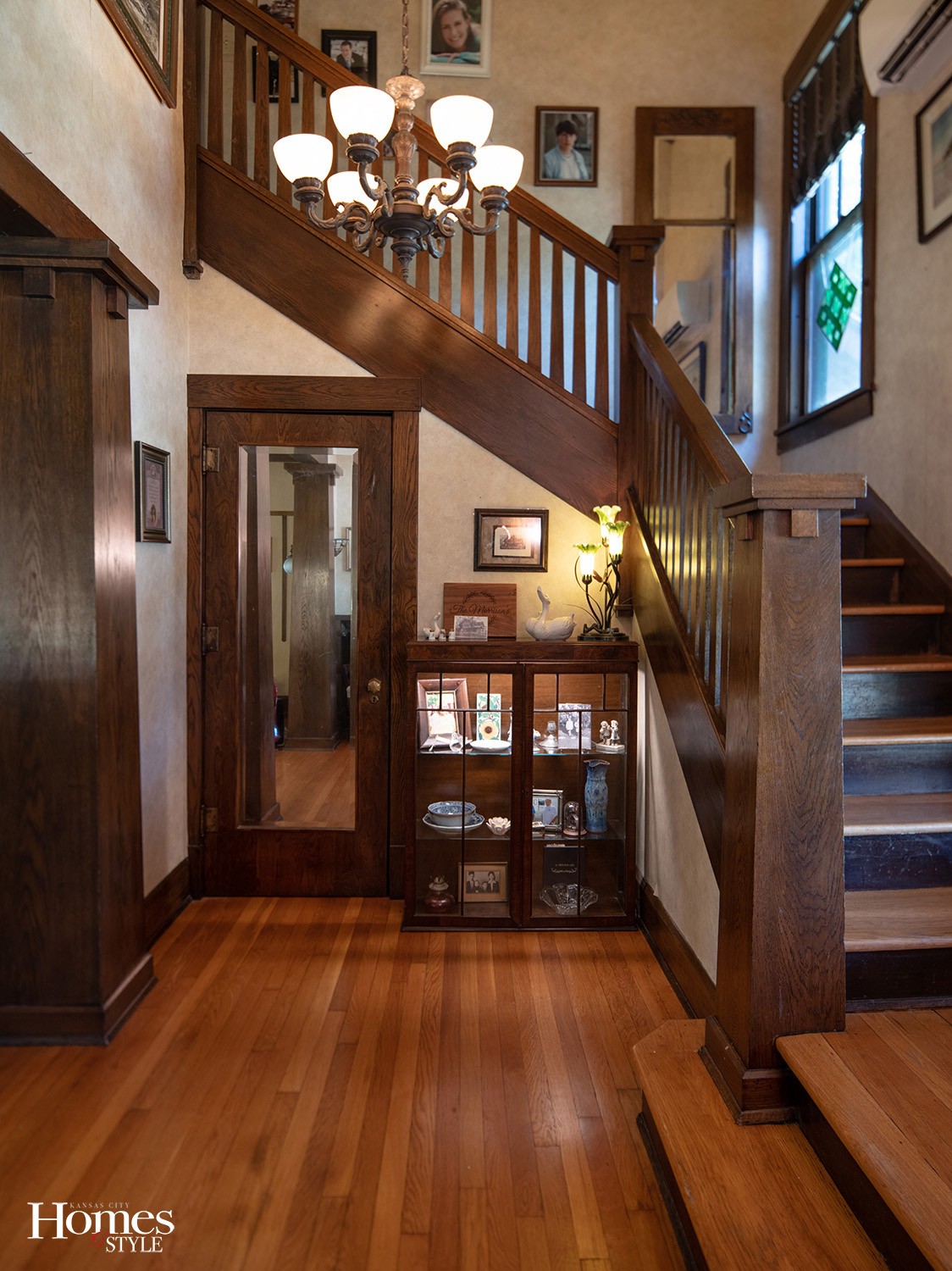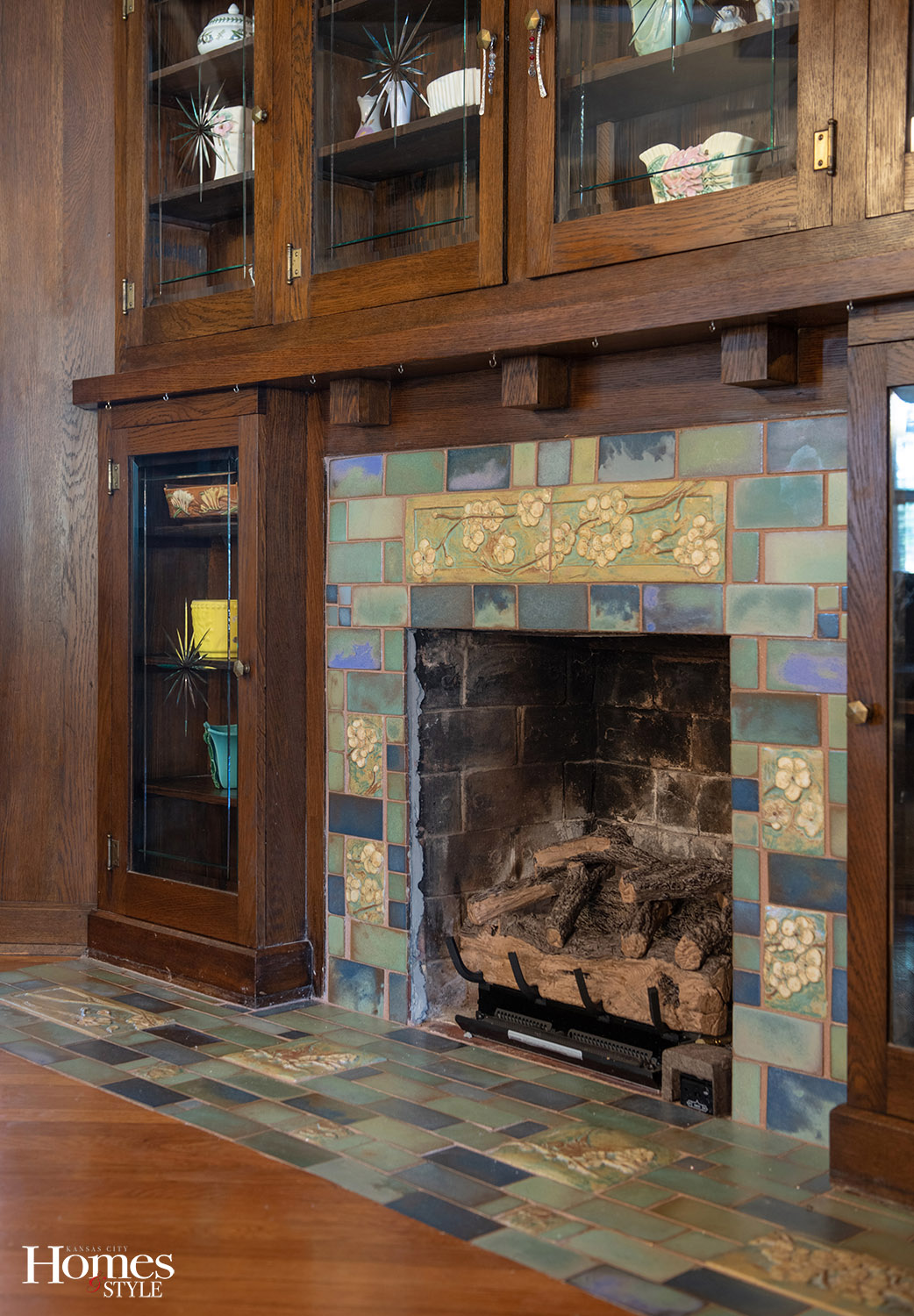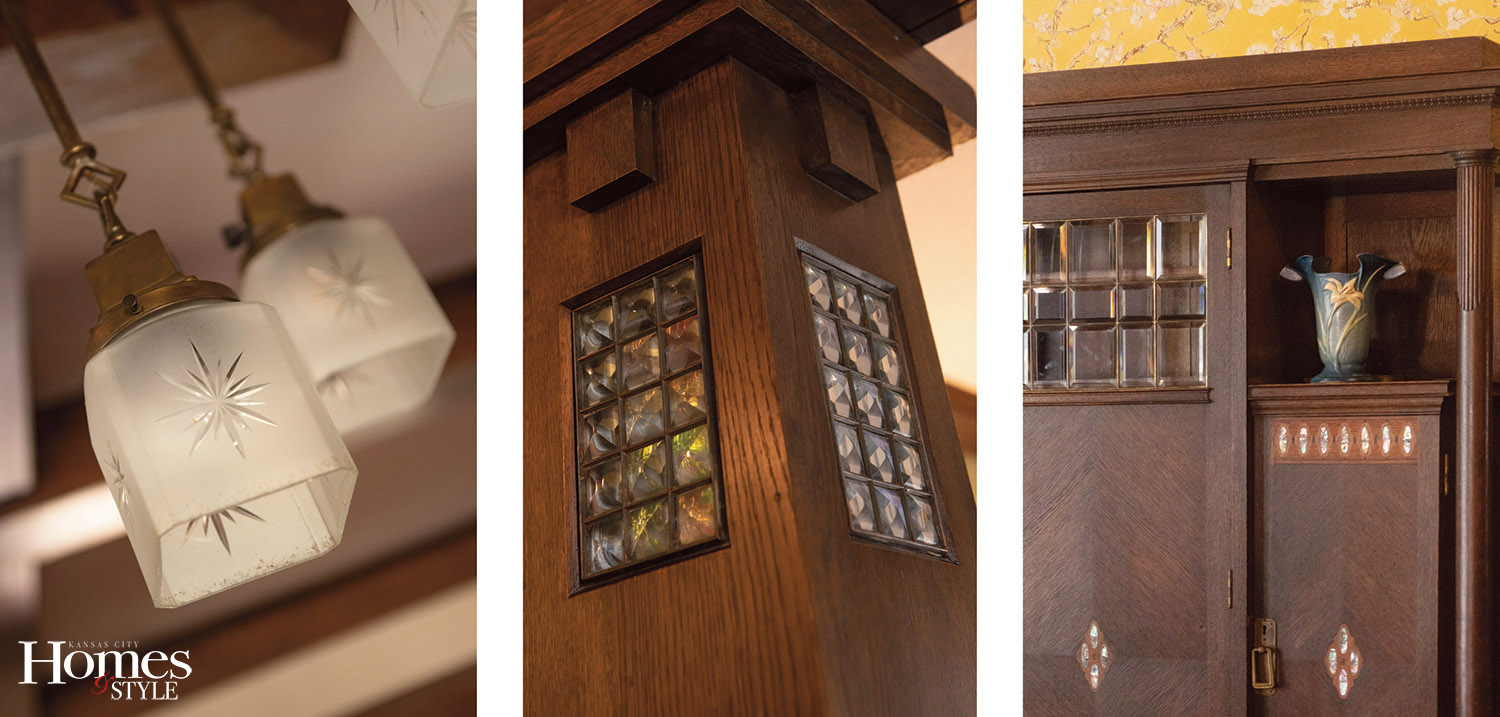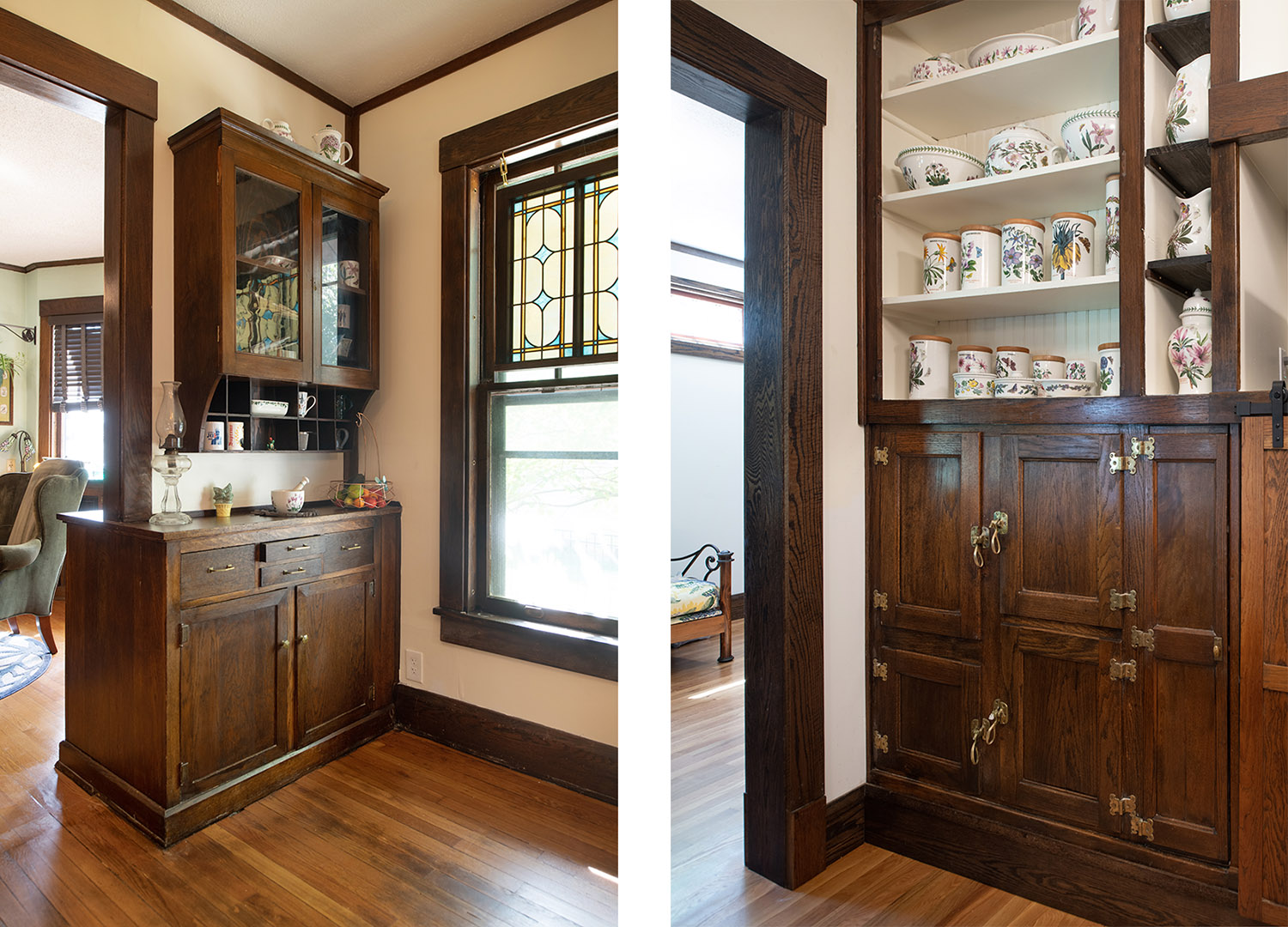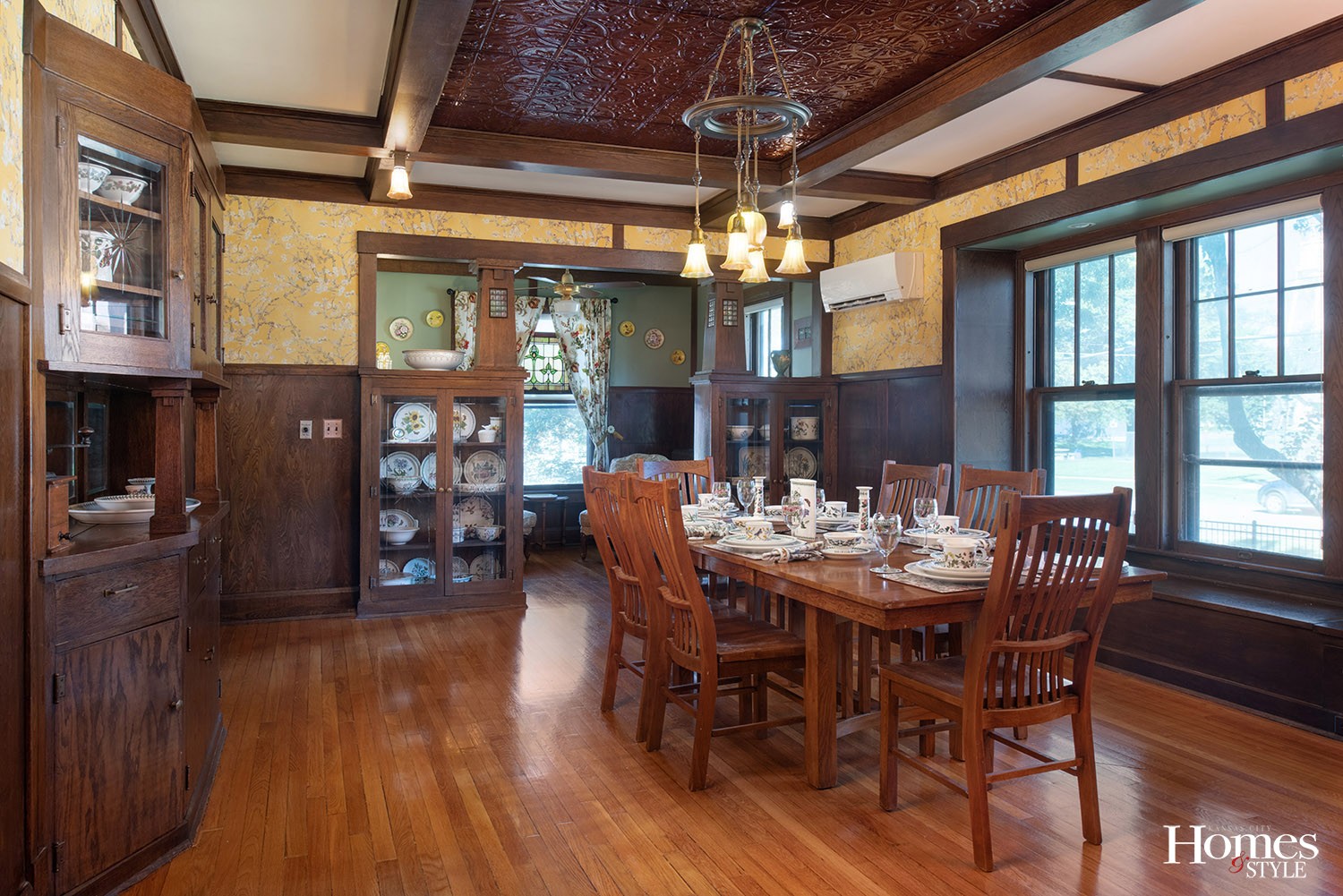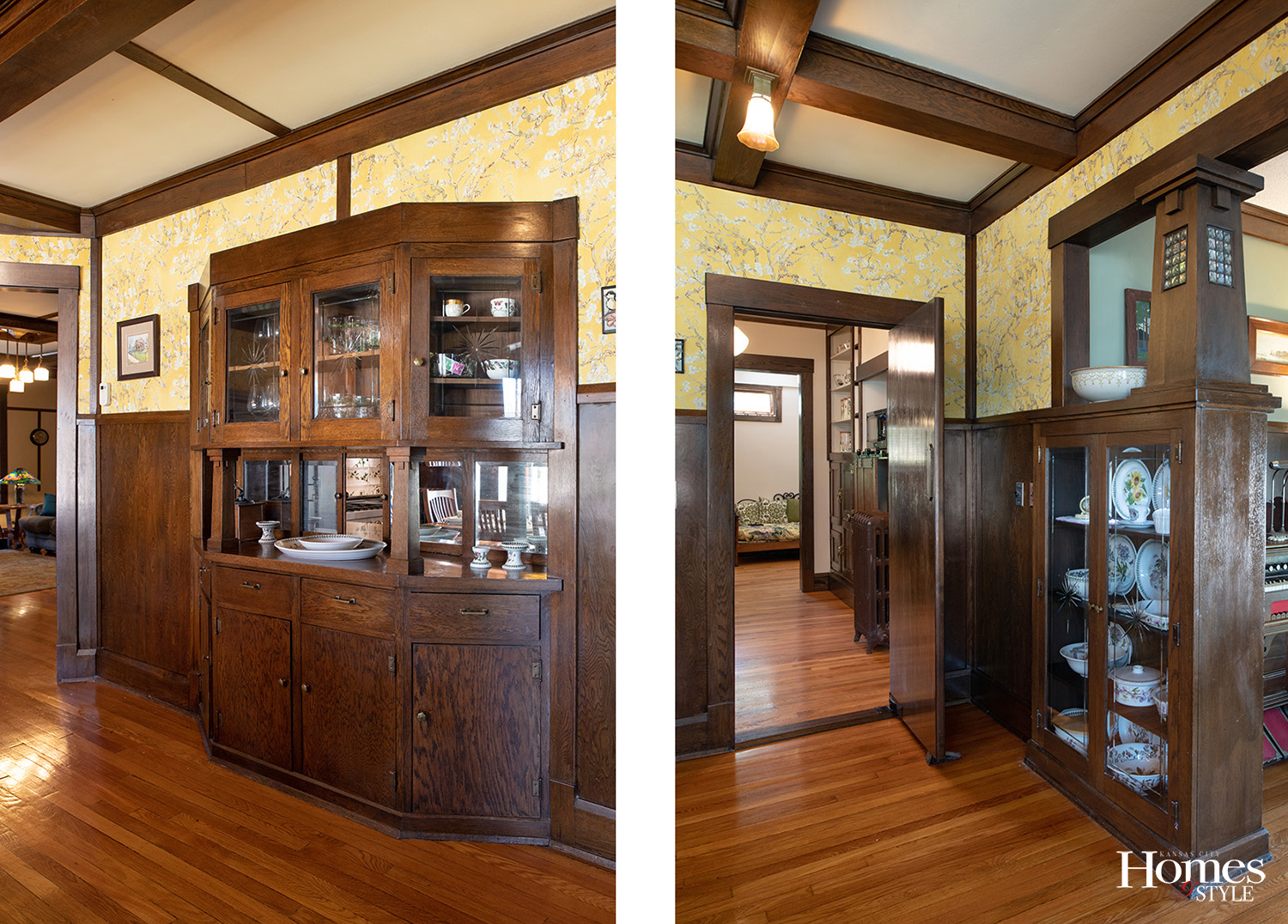The craftsman style abode hides its fair share of secrets.
Story by Michelle Mastro | Photography by Matt Kocourek
Some houses in need of a bit of TLC come with a mystery or two, especially older historical homes. Pull back a bathroom’s faded wallpaper and discover richly patterned art deco inspired hand-drawn paintings. Or, uncover the beauty of richly hued hardwood floors concealed beneath thick shag carpeting that’s seen better days — decades ago. Spencer and Lori Morrison experienced something akin to this while renovating their Craftsman style home.
“We’ve been in the home five years now, and this project has been a work in progress, a labor of love as my wife calls it,” Spencer explains. “We were heading towards retirement, but when we walked into the house, we were surprised by all the woodwork. It hadn’t been painted — like some people tend to do when modernizing homes. It was all original and untouched. The house was built in either 1912 or 1913 — and if the wood had been white — there’s no way we would have bought the house. It would have taken way too much time to restain and redo all that wood.”
The home’s exterior belied an unexpected past. It was the copper ceilings and the custom woodwork that gave the true identity of the home away. “From the outside, no, you wouldn’t have been able to tell the home was a Craftsman style house,” recalls Lori. In fact, based on the exterior alone, the house might appear more in line with a prairie style home with a porch added in during the 1970s. “What sets a Craftsman style house apart is, I guess, that it’s unbelievably handcrafted,” says Spencer. “All the wood is original to the home — all the wood around the house and in the ceilings. It’s all thick grained and made to fit perfectly. You can’t even get a nail into some of these corners, it’s that well made.”
Slowly, through the process of renovating, the house gave up the rest of its secrets. “We had no idea the floor underneath the kitchen would be earthen with vinal on top,” Lori reveals. “There was sawdust and horsehair that all must have come from 1912. The tile we pulled up was from 1978. In 70s remodels, this was how they did it back then, they just placed new things on top.”
Indeed, this is how Spencer and Lori learned the unfortunate truth that their home had been the site of a murder in 1978. “Apparently, the whole town had known about it, but we hadn’t known before renovating the house. The murder took place in the kitchen, and we know this because there is a beautiful passthrough there, and when we uncovered it, there was a bullet hole in the wall,” says Lori.
Eager to find out more about the home, Spencer and Lori turned to their local library’s resources. But their sleuthing yielded few results. “In our search for more answers about the home and its origins, we’ve heard everything from the Mennonites built it, to it was a kit home, which doesn’t seem — because it’s so very huge — possible. Nor could we find numbers on any of the internal pieces,” says Lori. “It’s also a mystery how the house stayed so well preserved.” Other riddles remain, like the fact that neither Spencer nor Lori could find info on who the original architect was. “There is a sister home down the street like our house but smaller, and those owners don’t know who built it either,” says Lori.
Shaking off these unknowns, the couple turned their attention to something within their control. They tore out the rest of the kitchen’s 1970’s flooring, replacing it with new hard wood. “The kitchen tile had been this ugly brown color, but we also needed to redo much of the lighting. Some of the original light fixtures remained upstairs and in the dining room. But we wanted to bring back the home to its 1920s look, so we had to redo the kitchen lighting as well. We wanted to restore everything in the home to what it should look like,” says Spencer.
Before they had started the renovation, Lori had been collecting from antique stores all around that area for original pieces that would fit the era. Other times, the couple turned to experts who could recreate pieces or materials in the same style. The fireplace, for instance, was designed by Pasadena Tileworks, who makes a lot of period-inspired tile. “We were in contact with a lady out there who designed the entire thing. We just looked at tile over and over, and so we had the fireplace done because we couldn’t design it ourselves,” Spencer says. “They feature gorgeous dragonflies,” Lori quickly adds. “Dragonflies were really big in Craftsman style homes, so we went with them. Frank Lloyd Wright also used a lot of nature motifs in his designs, and his work was really an offshoot of Craftsman, and so everything worked out well.”
Craftsman style homes rely on earth tones and muted shades, not the bright colors you might see in Victorian homes. A precursor to Midcentury Modern, Craftsman style is all about exploring what is simple yet beautiful. Thus, the biggest challenge the pair faced was finding materials that would match the Craftsman look. For the kitchen backsplash, they went with tile from Italy depicting delicate flowers to match the greens and creams of the space. “For the kitchen, we landed on darker cabinets and glass,” says Lori. “We searched for our dining room lights individually on eBay. And it took a long time to find everything because none of the antique pieces were ever available as several items at once.”
Yet, for their part, Spencer and Lori have cultivated a generous turn towards reciprocity. Lori and Spencer offered up their 1970s pieces to Midcentury Modern admirers. “We had a lot of 70s stuff in the house, and MCM is really in right now, so we advertised the pieces on Facebook — and a couple of people came out and wanted to take the pieces! We wanted to give them all to somebody who loves that style like we love Craftsman style homes,” says Spencer.
Both Spencer and Lori have been long devotees of Craftsman style homes. In Washington state, where the couple had originally hailed from, arts and crafts homes dotted the land. “There, the style might be called bungalows or mission style arts and crafts — because they have a lot of them out there,” says Spencer. “At the same time, sometimes we just think we’re old souls, because we were drawn to this style of home. It wasn’t a good time to buy a house — but we wouldn’t have been able to buy a Craftsman style home in Seattle because they are now two and three million-dollar homes now,” Lori adds.
Despite its mysteries, the home has proven a beloved treasure to the family. “You’re supposed to
downsize when you’re retired, well, we have five grandkids who visit regularly, and it’s not too big for all of them. The kids love the house and know every nook and cranny. It’s just a great house for an extended family,” says Lori.
Resources
- Kitchen Tile: The Tile Shop
- Hardware: Locks and Pulls
- Wallpaper: One Stop Decorating
- Countertops: Global Stone LLC
- Lights: River Market Antiques and Petersons Antiques
- Windows: Architectural Salvage, Wichita
- Fireplace Design & Tile: Pasadena Tileworks



